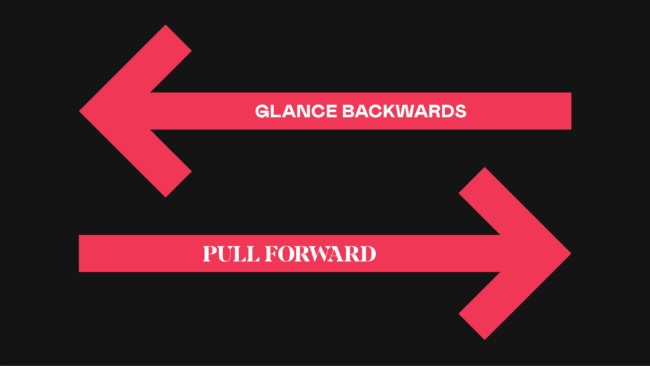
Covid-19 has impacted how we look at health and subsequent changes in behaviour have opened up numerous opportunities for healthcare providers, FMCG and tech.
There has never been a time when people’s health has gained such global attention. We are all acutely aware of our own health – closely monitoring for specific symptoms – but also of the health of whole nations. The COVID-19 pandemic has resulted in a health paradigm shift which will have a profound and direct impact on people’s relationship with their wellbeing. This will spread across all aspects of health – from individuals’ personal nutrition and interactions with healthcare professionals, to opinions of government investment in health services and the role of pharmaceutical brands.
When looking at the impact of COVID-19 on health awareness, some behaviour changes were already emerging which the pandemic has accelerated, but with others the shift has been almost instant as behaviours had to be adapted as a result of this unprecedented disruption.
Holistic wellbeing
In a few short months, there is already evidence of the effect of coronavirus on people’s attitudes toward health, such as growth in organic food sales and an upsurge in interest in spices including turmeric and ginger, as people look for ‘health halo’ ingredients to boost their immune systems.
In France, specialist organic food shops have reported sales increases of more than 40%. Meanwhile, UK health food retailer, Holland & Barrett, put a cap on supplement purchases because of the rising demand while online retailer Healthspan revealed at the end of March that sales of vitamin C supplements had tripled in a week.
The concept of ‘holistic wellbeing’ is raising health-awareness as people look to positively affect their long-term wellbeing by engaging in healthy lifestyle and regimes. And there is a myriad of solutions available to help with this.
How people manage their day-to-day health has been transformed with apps and fitness wearables which have gained in popularity. The global medical wearables market is projected to reach $19.5 billion by 2025 from $7.4 billion in 2020. Many brands – Nike Run Club and Body Boss for instance – have created communities to build on this digital experience to support users’ health. Examples of holistic wellbeing include brands applying circadian rhythms principles to doctors in Scotland prescribing doses of nature.
Mintel’s Consumer Trends 2030 report suggests this is a trend that will continue. It points to consumers moving away from products that promise instant results and instead looking for holistic solutions to improving mental, physical and emotional wellbeing. So rather than spa days and fitness holidays, people will look for products that help ongoing maintenance of a healthy and positive lifestyle.
Health service provision
The increased attention on personal health and preventative measures comes amid the ever-growing pressure on public health budgets, which pre-date COVID-19 but are now more acute.
The way healthcare is accessed has not changed in the past 1,000 years, but huge advances in diagnostics, medical devices and disease prevention mean the focus is now changing from delivery of services to patients within hospitals to receiving much of our care remotely.
In 2018, the NHS launched the Stay Well Pharmacy campaign to encourage people to use pharmacies for minor illnesses which generated 20 million GP and A&E visits a year. A second wave of the campaign was launched in 2019. Policymakers have also been urged to consider using digital media provisions to combat extended waiting times for a GP appointment.
While there has been intense pressure on hospital beds from the significant numbers of seriously ill COVID-19 patients, as conditions ease we expect to see an acceleration in the shift of care away from inside, to outside the hospital.
COVID led to a surge of remote GP clinics as face-to-face consultations were vastly reduced and this may well have instigated a longer-term behaviour change.
Consumer goods and pharma worlds join forces
To the backdrop of holistic wellbeing and more remote healthcare access, there is also the consumerisation of pharma – the convergence of the fast moving consumer goods (FMCG) and pharma worlds. This works both ways – we see FMCG adopting pharma semiotics to build credibility into their offerings while pharma adopts FMCG styles and techniques to create brand relevance and a renewed appeal towards modern, younger consumers.
Previously the market has been dominated by pharma heritage companies such as GlaxoSmithKline (GSK), Johnson & Johnson and Bayer, which continue to focus heavily on the consumer health space, but there is now growing interest from non-traditional, science-based FMCG players and food or ingredient producers such as Nestlé, Danone, Procter & Gamble, Reckitt Benckiser and Colgate-Palmolive, attracted by the higher consumer loyalty and superior margins of health brands. This convergence of interests is expected not only to contribute to further sector growth in the future but also to increase frequent crossover between these two types of businesses. This, in turn, is fundamentally changing the consumer health market.
Increased levels of consumer knowledge about health and self-health management means pharma and science language is now not only appreciated but differentiating and adding value to brands. FMCG brands – such as Vitamin Water – are championing key ingredients and benefits using pharma-inspired terminology to instil stronger credibility while healthcare brands are embracing FMCG aesthetics – for example Olly Vitamins – by creating brands not drugs, adding value with design, pushing brand personality and creating everyday appeal.
As health and personal wellness blend, it’s not just brand language that evolves but also the channels brands use to interact with consumers. A few disruptors are shaking things up and shaping experiences that will change the way consumers shop for healthcare forever. Direct to consumer models, product personalisation and a contemporary look and feel will soon become expected. This is particularly evident in the multivitamins and nutritional supplements category with brands such as Care/of and Baze offering tailored products and personalised branded experiences.
Emerging opportunities for pharma brands
With traditional FMCG giants entering into the health space more and more and a wellbeing management scenario giving ‘preventative’ and ‘out of hospitals’ solutions a key role in keeping national health system costs down, how do pharma brands need to think about themselves and the experience they offer to attract and retain consumers’ attention?
Three top tips:
- Health is so much more than the absence of disease, is a multilayered state of complete physical, mental and social wellbeing, which digitally savvy consumers can constantly track and control today. Use tech to easily engage, educate and empower people to adopt healthy lifestyles and stick to them.
- Shifting care outside of hospitals may create markets for products that live in the home as much as traditional healthcare settings, or take different routes to patients. Think about the implications for audiences now interacting with your brand beyond healthcare professionals, for example by humanising the experience by speaking a consumer-friendly science language and showing your brand personality.
- Think about patients’ journeys as FMCG would think about consumers’ journeys.
For each stage of the journey consider the channels they use, what they expect, what frustrates or scares them and how your brand could make things easier and better for them throughout the entire experience.

